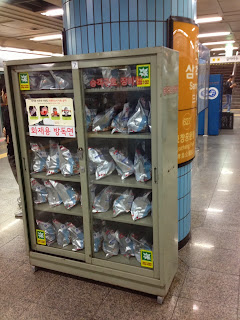If your news feeds looks anything like ours, they have been filled with a particular slew of articles trending across the interwebs. All these blogs, articles, and reddit posts fall somewhere within the theme of how to do the twenty-something thing the right way. Such articles carry titles like, “20 things Every Twenty-something Should Know” or “How to Successfully Conquer Your Twenties” or “How to Not Hate Yourself For The Rest of Your Life For Having Been Such an Awful Twenty-Something.”
A
few years ago, author Alexandra Robbins coined the phrase “quarter-life
crisis” in reference to the experience of the anxious, modern
twenty-something. Contrastingly, other bloggers praise the twenties as
an extended adolescence, asserting you shouldn’t worry about growing up
until your thirties. We believe there is an underlying issue at the
heart of the quarter-life crisis, millennial, twenty-something
discussion -- and we’d like to offer our own voice to the conversation.
(Our alleged twenty-something-self-involvedness shining through…)
A
few months before our wedding, we met with Andie’s Uncle Glenn who
would be officiating the ceremony. While we were there, he spoke some
wise, paradigm-shifting words that have become a personal mantra for us
as we attempt to navigate this season of our life together.
In
response to our anxiety over what we were supposed to be doing with our
lives, Uncle Glenn gently reminded us that, “The twenties are for
learning.” (Well, that’s how Garrett insists the wise counsel goes.
Andie believes it’s actually “the twenties are for teaching”. But,
enough of the semantics...)
Much
of the discussion over millennial life seems to revolve around the
tangible things twenty-somethings have to “show for themselves”. What
have you accomplished so far? How much fun are you having? Are you investing in networking relationships who will help
you land your dream job later? Have you been visited by the dream job ferry who tells you what your ideal vocation is? How are you achieving financial stability so you
can move on to starting a family, paying a mortgage, and blabla blabla
blabla?
But for us and most of our friends attempting to navigate their twenties in
the worst job market since WWII, life doesn’t necessarily flow like a
textbook flow-chart.
That
is precisely why we find so much peace in Uncle Glenn’s words. It is
perfectly OK, and even desirable, to embrace this season of our life as a
season of learning. Or, to extend the concept further, one could say
the twenties are for developing a life-long commitment to learning.
Because,
let’s get real. Deep, introspective questions pertaining to our purpose
and direction in life do not simply cease to plague us once we turn
thirty… or forty, or fifty, or sixty, or once we obtain a certain job
title, or once we have children...
We
propose that shifting our perspective away from a need to force our
lives through a specific algorithm to “prove” our value as individuals
dramatically alters the way we encounter joy and fulfillment in our
twenties (and our lives in general). This shift only happens once we have the humility to accept every ordinary day as an opportunity for
learning.
Instead
of focusing so much of our attention on being known by what we do or
accomplish, what would happen if we began to focus on what kind people
we want to be, our “identity capital” as this TED talk suggests.
It
is extremely humbling for us to go back and re-read our first post for
this blog. We had high hopes for what we were going to be “doing” in
Korea. Volunteer in an orphanage, work for LINK, you know, “big” stuff…
But in reality, we’re just English teachers in rural schools in South
Korea. Most days, our lessons are subpar, interrupted by endless
requests of kids pantomiming needing to go pee - because they can’t
remember the countless times we’ve taught them how to say “bathroom” and
assume we haven’t learned the meaning of “hwajungshil” yet.
These are the moments we have to remind ourselves “the twenties are for learning”.
So, in honor of the many obscurely numbered lists out there dedicated to twenty-somethings, here is a list of our own:
12 Things We’re Learning as Twenty-somethings
(and Most Likely Will Continue to Learn Throughout the Rest of Our Lives):
- The importance of always attempting to see the world through other people’s lenses.
- The importance (and, at times, difficulty) of building and maintaining meaningful relationships.
- How to give and receive grace with… more grace.
- Being foreigners in someone else’s land is really, really friggin’ difficult.
- (cont. from 4): we should be compassionate and empathize with the foreigners in our midst.
- Some things are as easy to decide as rock, paper, scissors (thanks to our students for this revelation).
- The things we say are often not as important as the way in which we say them.
- Sometimes people will choose to not like you and there’s really nothing you can do about it but pray for the grace to respond in love.
- Writing a blog is a very difficult thing to be disciplined about. As a matter of fact, being disciplined about anything is difficult -- but usually worth it eventually.
- Sometimes you miss the last train home; you can be mad about it, or you can get a hotel and make it into an adventure.
- Honesty and integrity are always better than even the smallest bit of untruth.
- Never regret generosity.
As we mentioned in a previous post, we are observing a strict no-cooking-never oath this year, so we have many opportunities to reflect on all this learning we're doing.
What things are you learning lately? We'd love to hear from you. Please comment and let us know.

.JPG)
.JPG)
.JPG)
.JPG)
.JPG)













































